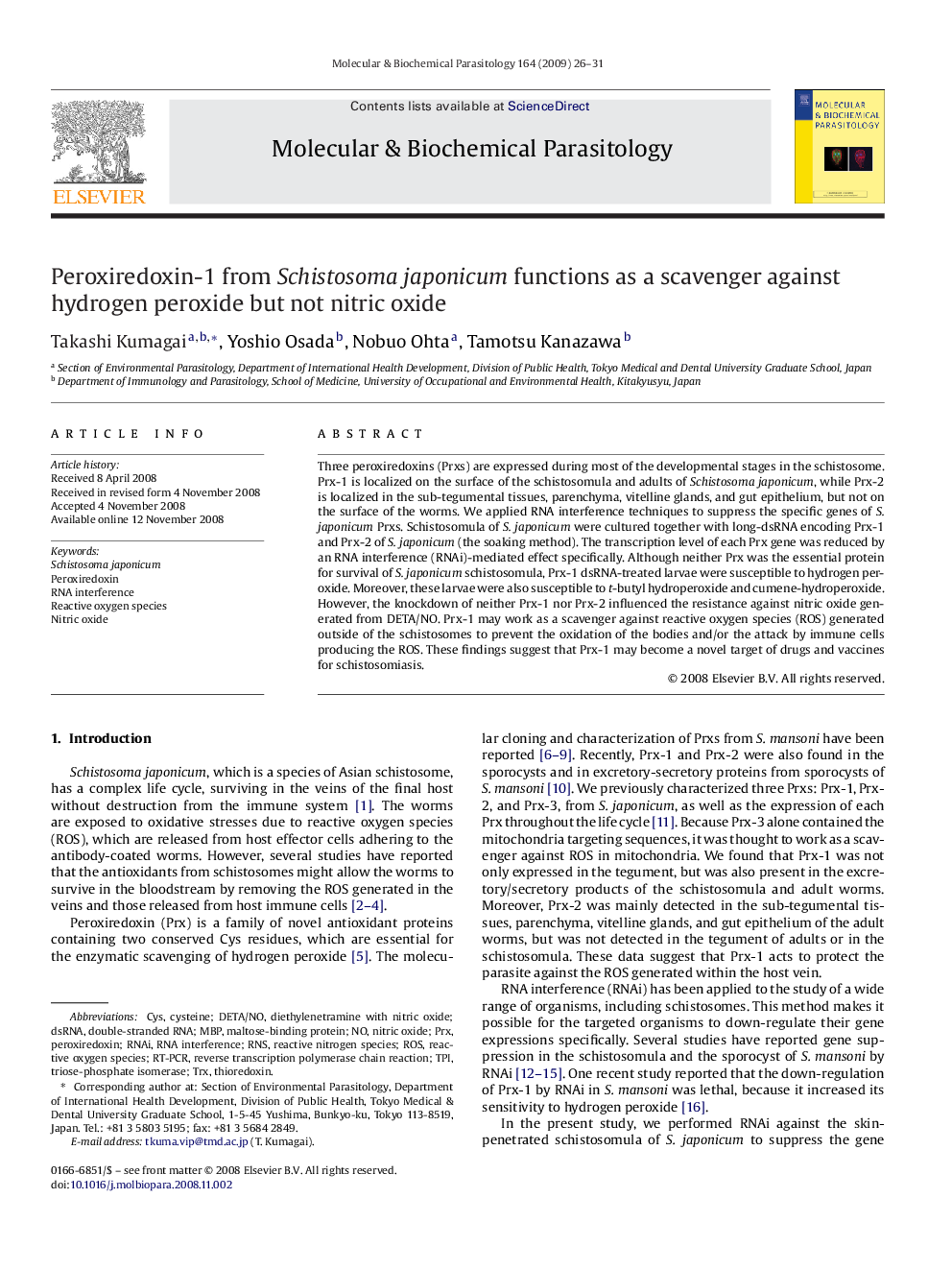| Article ID | Journal | Published Year | Pages | File Type |
|---|---|---|---|---|
| 2830042 | Molecular and Biochemical Parasitology | 2009 | 6 Pages |
Three peroxiredoxins (Prxs) are expressed during most of the developmental stages in the schistosome. Prx-1 is localized on the surface of the schistosomula and adults of Schistosoma japonicum, while Prx-2 is localized in the sub-tegumental tissues, parenchyma, vitelline glands, and gut epithelium, but not on the surface of the worms. We applied RNA interference techniques to suppress the specific genes of S. japonicum Prxs. Schistosomula of S. japonicum were cultured together with long-dsRNA encoding Prx-1 and Prx-2 of S. japonicum (the soaking method). The transcription level of each Prx gene was reduced by an RNA interference (RNAi)-mediated effect specifically. Although neither Prx was the essential protein for survival of S. japonicum schistosomula, Prx-1 dsRNA-treated larvae were susceptible to hydrogen peroxide. Moreover, these larvae were also susceptible to t-butyl hydroperoxide and cumene-hydroperoxide. However, the knockdown of neither Prx-1 nor Prx-2 influenced the resistance against nitric oxide generated from DETA/NO. Prx-1 may work as a scavenger against reactive oxygen species (ROS) generated outside of the schistosomes to prevent the oxidation of the bodies and/or the attack by immune cells producing the ROS. These findings suggest that Prx-1 may become a novel target of drugs and vaccines for schistosomiasis.
